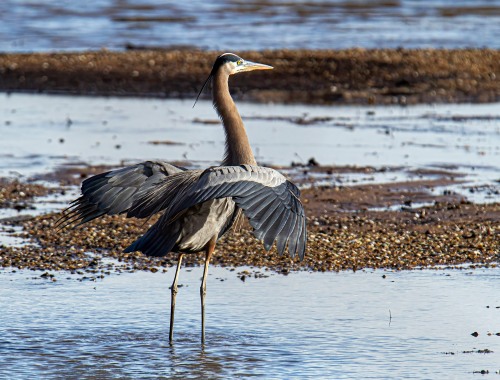July is World Watercolor Month, a month-long challenge in which watercolor painters of all ages and skill levels are encouraged to paint daily and post their work on-line. I have joined this challenge and am trying to paint something every day using the daily prompts at worldwatercolormonth.com. So far, I have managed to paint something every single day, generally following the daily prompt. Thanks to all of you for your support and encouragement as I have taken this little artistic detour on my photography journey.
If you want to see the first two installments of my painting efforts this month, check out my previous postings ‘More fun with watercolor‘ and ‘World Watercolor Month 2020—part 2.’ This third installment highlights my painting efforts of the past six days in reverse chronological order.
The prompt for 16 July was “machine.” I recalled an old mill with a waterwheel that I photographed in July 2012 that hinted at all kinds of machinery inside the mill building and did today’s little painting using one of my photos as inspiration. Here is a link to the original posting called ‘Stepping outside of the box.’ What I had forgotten, though, is that I had converted the images to black and white for the posting and I have no idea of the original colors of the structure, so I just made them up. My sketching skill are pretty weak still, so I printed a copy of the blog photo, rubbed a pencil on the back of it, and transferred a simplified version of it to the watercolor paper.
The prompt for 15 July was “forgotten.” Nothing came to mind, so instead I attempted to paint some Black-eyed Susans like the ones that I had seen while hunting for dragonflies earlier that day.
The prompt for 14 July was “green,” which made me think of flowers. So I painted a little patch of wildflowers, mostly by spattering paint—it turns out that it is a lot of fun to throw paint at paper in a somewhat controlled way.
The prompt for 13 July was “twisted.” Herons have such long necks that they often seem to be twisted, so I painted this little sumi-e style scene with three herons, some cattails, and a disproportionately large dragonfly.
The prompt for 12 July was “favorite place.” It is hard to represent Paris in a single image, so I chose to depict it with this view of the Eiffel Tower looking upwards from one of its “feet,” using one of my photos from last November as the the inspiration for this little painting —about 5″ x 7″ (127mm x 177mm). If you would like to see my original posting, check out ‘Eiffel Tower perspectives.’ I used the same transfer method for the sketch that I described above for 16 July.
The prompt for 11 July was “round,” so I did a little painting of a bicycle, loosely based on an artsy photo I took in Paris last November. If you would like to see my original posting, check out ‘Bicycle in Paris.”
I am experimenting with a number of different styles and subjects as I play with watercolor painting, but a few things are already clear. First, my greatest creative inspiration continues to come from my memories of Paris—three of the sixteen paintings I have completed so far were based on my experiences in the ‘La Ville Lumière’ (‘the city of light’).
Style-wise I continue to be drawn to the minimalist East Asian brush painting style known more commonly as sumi-e and have used this approach in three paintings already. Technically this is the freestyle version of sumi-e (xieyi) that tries to capture the essence of a subject in a minimum number of strokes rather than striving for a realistic representation of it. There is another more detailed sumi-e style called gongbi that I would not even attempt to imitate.
If you want to learn more about World Watercolor Month, click on this link or go directly to doodlewash.com. In addition to raising awareness and interest about watercolor painting, World Watercolor Month raises support for The Dreaming Zebra Foundation, a charity providing support so that children and young adults are given an equal opportunity to explore and develop their creativity in the arts.






© Michael Q. Powell. All rights reserved.
Read Full Post »

















































